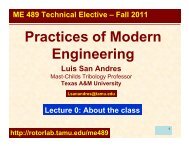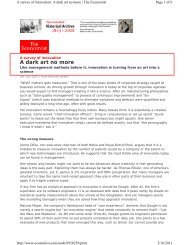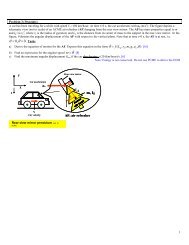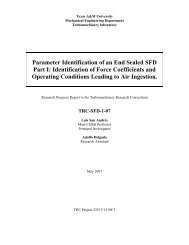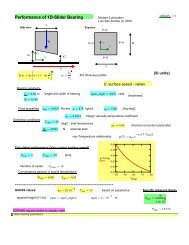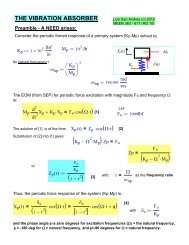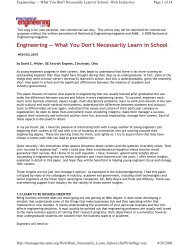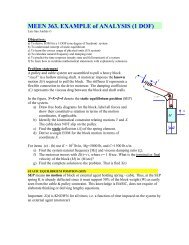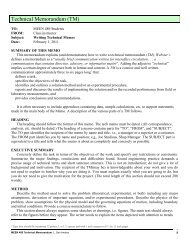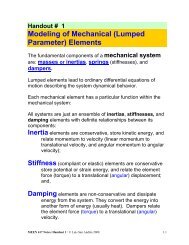Solving Problems in Dynamics and Vibrations Using MATLAB ...
Solving Problems in Dynamics and Vibrations Using MATLAB ...
Solving Problems in Dynamics and Vibrations Using MATLAB ...
You also want an ePaper? Increase the reach of your titles
YUMPU automatically turns print PDFs into web optimized ePapers that Google loves.
16<br />
Spr<strong>in</strong>g Mass Damper System – Forced Response<br />
fs<strong>in</strong>ωt<br />
m<br />
k<br />
c<br />
Example<br />
Plot the response of a forced system given by the equation<br />
..<br />
.<br />
m x+ c x+<br />
kx = f s<strong>in</strong>ω<br />
t<br />
(1)<br />
For ξ = 0.1; m = 1 kg; k = 100 N/m; f = 100 N; ω = 2ω n ; x(0) = 2 cms;<br />
ẋ (0) = 0.<br />
Solution<br />
The above equation is similar to the unforced system except that it has a forc<strong>in</strong>g function. To<br />
solve this equation we have to reduce it <strong>in</strong>to two first order differential equations. Aga<strong>in</strong>, this<br />
step is taken because <strong>MATLAB</strong> uses a Runge-Kutta method to solve differential equations,<br />
which is valid only for first order equations.<br />
Let<br />
.<br />
x = v<br />
(2)<br />
so the above equation reduces to<br />
.<br />
f c k<br />
v = [( )s<strong>in</strong>ω t − ( ) v − ( ) x]<br />
(3)<br />
m m m<br />
We can see that the second order differential equation has been reduced to two first order<br />
differential equations.



